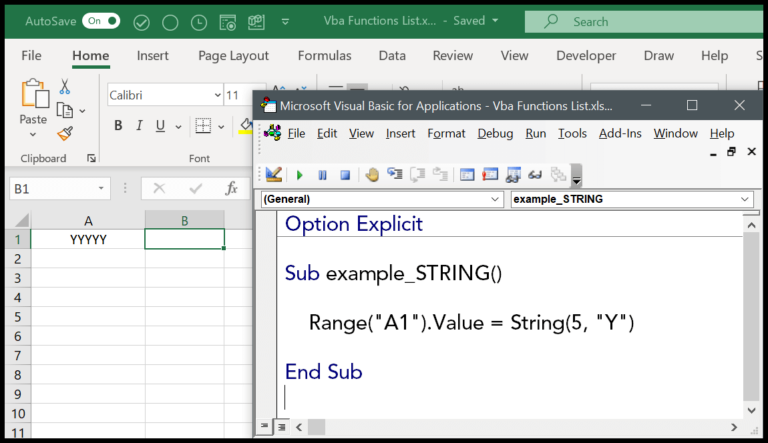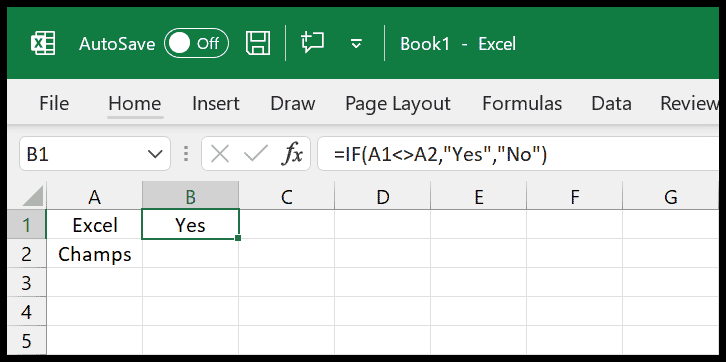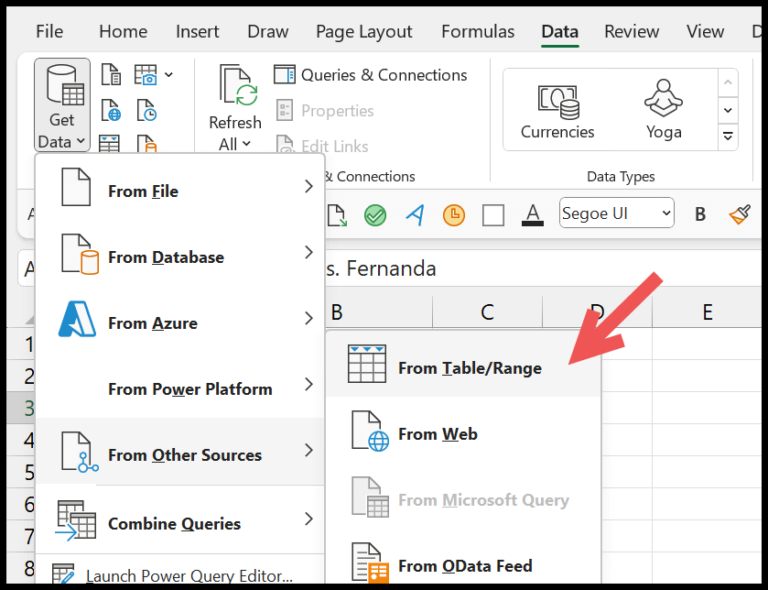When selling software as a service (SaaS), the approach one takes can significantly influence the outcome. Different sales methodologies are tailored to fit the unique nature of SaaS—where the product is intangible, the sales cycle can be complex, and the need for building long-term customer relationships is paramount. Successful SaaS sales strategies hinge on understanding a customer’s core needs and delivering a solution that not only solves an immediate problem but also offers sustained value over time.
Navigating the sales process in the SaaS world requires a blend of skill, strategy, and a deep understanding of customer psychology. Sales methodologies like MEDDIC, Challenger, and SPIN have stood out in their ability to foster these connections and guide potential customers through the journey from awareness to purchase. Each methodology brings a different set of tools and techniques to the table, emphasizing various aspects of the selling process, from qualification to closing.
Choosing the right sales methodology for a SaaS business isn’t about picking the most popular or modern approach; it’s about finding a system that resonates with the company’s values and aligns with the customer’s buying process. Not every method will be suitable for every SaaS company, but the right fit can propel a sales team to achieve their targets and drive long-term growth.
Understanding the SaaS Landscape
To grasp the SaaS landscape, one must acknowledge its rapid evolution and the unique aspects defining SaaS offerings, impacting customer acquisition and the role of inbound marketing in its growth.
Evolution of SaaS Sales
The sales approach for SaaS (Software as a Service) products has transformed significantly with technological advances. Early on, sales were more direct and personal, necessitating extensive sales teams, but over time, the emergence of the internet and cloud computing shifted the focus towards digital sales channels and inbound marketing strategies. Companies now leverage SEO, content marketing, and social media to attract users, turning sights from outbound to inbound methods to reel in potential customers.
Key Characteristics of SaaS
Instant Accessibility: SaaS products excel in providing immediate access from anywhere, which aligns perfectly with present-day demands for flexibility and mobility.
- Predictable Revenue Stream: Subscription-based models offer a continuous revenue source and make forecasting simpler for companies.
- Scalability: They can effortlessly scale to match customer needs without significant upfront costs, enabling a lower barrier to entry and facilitating customer acquisition.
- Automatic Updates: Continuous updates and improvements occur without customer intervention, ensuring they always have access to the latest features and tech enhancements.
- Customer-Centric: SaaS companies must relentlessly focus on customer satisfaction and retention, implementing feedback to refine their services.
Foundations of SaaS Sales Methodology
When tackling SaaS sales, companies focus on tailoring strategies to fit their specific customer base and product offerings. Using a robust methodology isn’t just about making sales; it’s about creating sustainable, long-term relationships with customers.
Identifying the Ideal Customer Profile
An Ideal Customer Profile (ICP) is the cornerstone for any SaaS sales strategy. Sales reps need a clear picture to recognize who makes an ideal customer. They take into account various factors like company size, budget, and pain points. Neil Rackham’s work on lead qualification also emphasizes the need to understand the customer’s critical business issues for a successful sale. Crafting ICPs helps in creating focused buyer personas, streamlining marketing efforts and increasing conversion rates.
Building a Structured Sales Process
A structured sales process in SaaS is akin to having a detailed roadmap. It typically starts with lead generation and follows through stages like prospecting, qualification, needs assessment, solution presentation, and closing. Each stage targets specific objectives and leverages distinct tactics to shepherd prospects down the funnel. This approach is critical in B2B sales, where decision cycles are longer and more complex than in B2C scenarios. A structured process guarantees that the sales team can measure progress and refine techniques as they go along.
Sales Models and Methodologies Overview
Different sales models cater to varied SaaS products and customer bases. Common models include self-service, where customers make purchases without rep interaction, and enterprise sales, tailored for high-value B2B transactions with intricate sales cycles. As for methodologies, they serve as the philosophical backbone of sales strategies. Examples include:
- MEDDIC: Focuses on metrics, economic buyer identification, decision criteria and process, and pain points.
- Challenger Sale: Based on the idea of teaching customers, tailoring the sales message, and taking control of the conversation.
- Consultative Selling: Establishes the salesperson as an advisor who helps the customer solve a problem or seize an opportunity.
Choosing the correct sales model and methodology is essential in setting a SaaS company on the path to scalable growth.
Engaging the Prospect
Engaging a prospect effectively is pivotal for any SaaS sales process. It involves a deep understanding of their pain points, a structured qualification approach, and a clear communication of economic impact and value.
The Art of Discovery
In the discovery phase, the salesperson focuses on uncovering the prospect’s challenges and goals. By asking targeted questions, they can identify critical pain points. The art lies in not just gathering information but interpreting it to align the SaaS offering with the prospect’s needs.
Qualification Frameworks
Qualification is about ensuring a prospect is a good fit for the offering. Frameworks like BANT (Budget, Authority, Need, Timing) and MEDDIC (Metrics, Economic Buyer, Decision Criteria, Decision Process, Identify Pain, Champion) provide a structured method to evaluate prospects. Sales teams should use these frameworks to ascertain if they should pursue an opportunity or allocate their resources elsewhere.
- Metrics: What quantifiable metrics will your solution impact?
- Economic Buyer: Who has the financial authority?
- Decision Criteria: What are the prospect’s requirements?
- Decision Process: How does the prospect make buying decisions?
- Identify Pain: What are the key challenges the prospect is facing?
- Champion: Who within the organization supports your solution?
Economic Impact and Building Value
Demonstrating the economic impact of a SaaS solution helps build value in the prospect’s eyes. Salespeople should clearly outline how their offering will result in cost savings or revenue generation. They must articulate this impact in terms that resonate with the prospect, using concrete data points where possible. Effective value building is not just about listing features but translating them into real-world advantages for the prospect.
Sales Methodologies for SaaS
Selecting the right sales methodology can make a significant impact on the success of a SaaS product. The methodologies outlined below focus on enhancing customer understanding, tailoring solutions to specific needs, and effectively guiding prospects through the sales funnel.
MEDDIC
MEDDIC is an acronym for Metrics, Economic buyer, Decision criteria, Decision process, Identify pain, and Champion. This methodology is comprehensive, emphasizing the need to understand the detailed profiles of potential customers and what drives their purchasing decisions. By identifying the economic buyer and recognizing their decision criteria, sales teams can tailor their approach to align with what the client truly needs.
Challenger Sale
Challenger Sale takes a unique approach by challenging clients’ current perspectives, driving home insightful and often provocative viewpoints that can change their way of thinking about their problems. The method is built on the idea that high-performing salespeople—the ‘Challengers’—use their deep understanding of a client’s business to push their thinking and control the sales conversation.
Solution Selling
With Solution Selling, salespeople focus on the customer’s pain points and propose a SaaS product as the fitting solution. This process is consultative, asking strategic questions to uncover issues that the customer may not yet be aware of and demonstrating how the SaaS offering can resolve those issues efficiently.
SPIN Selling
SPIN Selling revolves around four types of questions to facilitate the sale: Situation, Problem, Implication, and Need-Payoff. This method encourages salespeople to investigate the client’s situation thoroughly, understand and develop the problems, discuss the implications, and highlight the benefits of the proposed solution. This dialogue helps in creating a compelling case for why a SaaS product is necessary.
Practical Sales Skills
In the world of SaaS, a salesperson’s prowess is defined by their command over product demonstrations, objection handling, and advancing the sales cycle strategically.
Mastering the SaaS Demo
The demo is the showpiece of any SaaS product. Sales professionals must ensure it’s tailored to address the specific needs of a prospect. They’ve got to highlight key features and benefits that solve real problems. This isn’t just clicking through screens; it’s storytelling with the product as the protagonist.
Handling Objections Effectively
No sales conversation is complete without objections, but they’re not roadblocks—they’re opportunities. Sales reps should listen carefully, understand the concern, and respond with clear, concise information. It’s essential to anticipate common objections and have responses at the ready, demonstrating an in-depth understanding of the product and its value proposition.
Advancing the Sales Cycle with Precision
Knowing when and how to move a prospect from one stage of the sales funnel to the next is crucial. Each interaction should end with a clear next step, whether it’s a follow-up meeting, a proposal, or a close. They need to ask the right questions, gauge the prospect’s readiness, and provide the necessary information to facilitate the decision-making process.
Building Long-Term Customer Relationship
Building a long-term customer relationship in the SaaS industry hinges on two critical factors: establishing trust and rapport, and ensuring retention with a robust onboarding process and ongoing support.
Trust and Rapport
For a SaaS company, building trust with customers sets the foundation for a lasting relationship. They should pay close attention to understanding a customer’s unique needs and providing solutions tailored to those needs. This personalized approach fosters rapport, as the customer feels the SaaS provider is invested in their success. Transparent communication about updates, product changes, and pricing also reinforces this trust.
Retention through Onboarding and Support
Onboarding is a pivotal moment in the SaaS customer relationship. A structured and informative onboarding experience can empower the customers, making them self-sufficient in utilizing the software. An easy-to-follow onboarding process might include:
- Step-by-step tutorials: Visual guides that walk the customer through the platform.
- Knowledge base: A comprehensive library of resources for on-demand assistance.
After onboarding, consistent support keeps the relationship strong. SaaS providers should offer multiple channels of support, like live chat, email, or phone, making it easy for customers to reach out whenever they need help. Regular engagement through check-ins can also keep the dialogue open and provide opportunities to offer further guidance or value.
Optimizing Sales Team Performance
In the competitive arena of SaaS sales, pinpointing and enhancing key performance indicators for sales teams is vital. It’s not just about tracking numbers but developing a team’s skill set and knowledge base to better navigate the sales environment.
Metrics and Performance Tracking
Understanding the health of the sales pipeline is paramount. Metrics are the compass that guides sales teams, and here are a few they often track:
- Conversion Rate: A clear picture of the effectiveness of their sales approach.
- Average Deal Size: Insight into the quality and value of the sales they’re closing.
- Sales Cycle Length: Indicates efficiency in moving prospects through the funnel.
A table format can succinctly present these metrics:
| Metric | Goal | Current Performance | Action Plan |
|---|---|---|---|
| Conversion Rate | Increase by 10% | Increased by 5% | Refine pitch |
| Avg. Deal Size | Grow by 15% | Grown by 8% | Upsell strategies |
| Sales Cycle Length | Reduce by 7 days | Reduced by 3 days | Streamline qualifying process |
Regularly reviewing these KPIs enables teams to track their performance and gauge the efficacy of their sales strategies.
Sales Team Development and Knowledge Sharing
Investing in the team’s continuous learning and knowledge sharing builds a formidable unit. Techniques include:
- Structured Sales Training: Regular workshops to keep up with the latest methodologies.
- Collaborative Learning Sessions: Case studies reviewed as a team foster collective insight.
- Resource Libraries: Accessible materials for self-paced learning.
They leverage these resources, ensuring that every team member can confidently apply various methodologies, from handling enterprise clients with a Target Account Selling (TAS) approach to adopting customer-centric models like SPIN Selling and Solution Selling. By encouraging a culture of learning and collaboration, the team not only improves their capability but also fosters an environment where shared knowledge contributes to the whole team’s success.
Leveraging Sales Enablement Tools
In the fast-paced SaaS sales environment, utilizing the right sales enablement tools can significantly enhance a sales team’s performance. From automating mundane tasks to harnessing the power of social media for lead generation, technology plays a pivotal role in optimizing the sales process.
Automation and CRM
Investing in automation tools and a robust Customer Relationship Management (CRM) system is a game-changer for SaaS sales teams. CRM systems serve as a single source of truth for customer interactions, providing salespeople with a streamlined and organized view of their sales pipeline. Automation features within these systems can handle repetitive tasks, such as data entry and scheduling follow-ups, allowing sales professionals to focus more on closing deals.
Key automation benefits include:
- Data capture and organization: Automating the collection and organization of client information.
- Efficiency: Reducing the time spent on manual tasks.
- Follow-up reminders: Ensuring timely engagement with prospects.
Using Social Media and Content Marketing
Social media platforms and content marketing are powerful tools for SaaS sales teams to increase their reach and establish thought leadership in their niche. They can create and share valuable content that addresses potential customers’ pain points, which helps to build trust and educate the target audience.
Effective strategies involve:
- Engagement: Regularly interacting with followers and sharing relevant content.
- Content distribution: Utilizing various content forms such as blog posts, infographics, and videos to engage prospects.
- Lead generation: Using targeted social media advertising to gather leads.
By embracing these technologies, SaaS sales teams can improve their effectiveness and deliver personalized experiences that resonate with prospects and customers.
Staying Ahead in the SaaS Sales Game
SaaS companies thrive by understanding current trends and innovatively applying sales methodologies. Let’s dive into how adapting to market changes and employing innovative sales strategies can play pivotal roles in sales success.
Adapting to Market Changes
The SaaS landscape is constantly evolving, with new technologies and changing customer expectations shaping the way companies sell their services. Adapting to these shifts is not just about recognizing trends but also about the agility to pivot strategies swiftly. The Target Account Selling (TAS) model is exemplary in this space—a method where sales teams focus on acquiring enterprise customers by crafting precise customer profiles based on current market trends.
Innovative Sales Strategies and Best Practices
In the realm of sales strategies, innovation is key. Best practices such as the Sandler Selling System emphasize a customer-centric approach, flipping the traditional script to a more collaborative and consultative sales conversation.
- Engage customers by:
- Listening carefully to their needs.
- Acting as a trusted advisor rather than just a vendor.
- Highlight the product fit for their specific challenges.
Sales reps should stay attuned to innovation within the sales process itself, adopting practices that can lead to a more tailored and impactful sales pitch, crucial for the customer’s decision-making process.
Concluding Thoughts on SaaS Sales Methodology
Choosing the right sales methodology is vital for a SaaS sales organization. It’s not just about having a strategy; it’s about having a framework that meshes with the unique challenges of selling software as a service. A solid methodology empowers salespeople with a clear path to close deals while also ensuring customer success and loyalty.
- MEDDIC and Challenger are popular for their structured approach, focusing on customer challenges and the salesperson’s deep understanding of the customer’s business.
- The Sandler Selling System stands out for its emphasis on qualifying leads and building long-term relationships rather than on hard selling.
When it comes to SaaS, flexibility and adaptability in the sales process are key. A SaaS sales team must be adept at understanding and addressing changing tech landscapes and customer needs.
To stay ahead, sales organizations often benefit from a combination of methodologies, tailored to their culture and the intricacies of the SaaS model. It’s about finding the balance between a methodical approach and the agility to respond to the market.
Ultimately, the right sales methodology for a SaaS company is one that:
- Aligns with their business goals.
- Reflects their values and culture.
- Addresses their customers’ pain points effectively.
- Allows for scalability and growth.
Each organization must assess which sales methodology fits like a glove for their unique situation, ensuring their teams are not just reaching targets but are also paving the way for sustained growth and customer satisfaction.
Frequently Asked Questions
When selecting a sales methodology for a SaaS business, it’s essential to understand the unique challenges and techniques that can cater to the digital nature of the product and the customer’s needs.
How do I pick the right sales approach for a SaaS business?
In choosing a sales approach for a SaaS business, one should evaluate methodologies that highlight problem-solving and value demonstration. Approaches like Solution Selling and Consultative Selling are popular because they tailor to customer needs and build rapport by offering solutions rather than focusing on the products alone.
Can you explain how MEDDIC enhances SaaS sales?
MEDDIC stands for Metrics, Economic Buyer, Decision Criteria, Decision Process, Identify Pain, and Champion. It enhances SaaS sales by qualifying prospects through a meticulous examination of their buying capacity and pain points, ensuring that sales efforts are focused on high-potential leads who are more likely to convert.
What are some proven sales methods for closing deals in SaaS?
Proven sales methods for SaaS include SPIN Selling, which explores Situation, Problem, Implication, and Need-Payoff questions, and the Challenger Sale, which focuses on teaching prospects, tailoring the sales message, and taking control of the sale conversation to drive the deal home.
In what ways does the N.E.A.T. methodology apply to SaaS sales?
The N.E.A.T. methodology stands for Needs, Economic impact, Access to authority, and Timeline. It applies to SaaS sales by helping salespeople identify and engage the key decision-makers, discuss the economic impact of the solutions offered, and understand the client’s timeline to make a purchasing decision.
What should I look for in sales methodology training for SaaS?
Sales methodology training for SaaS should include practical, actionable strategies that align with the SaaS business model, focusing on understanding customer needs, delivering value, handling objections, and leveraging technology and data analytics to streamline the sales process.
How does the SPIN selling technique work for SaaS products?
The SPIN selling technique works for SaaS products by guiding salespeople through a series of questions that uncover the prospect’s current situation, problems, potential implications of those problems, and highlighting the need-payout of the SaaS solution, which helps in creating a stronger case for the product.



